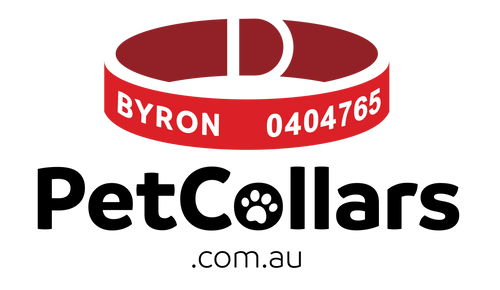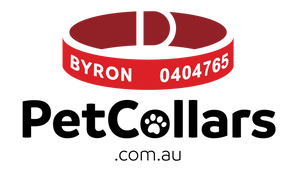Just like Hoomans, pets also get injured and become ill. Even your backyard can cause issues that will require First Aid which you can read about HERE.
So knowing what to do before you get a sick or injured pet to the vet can ultimately save their lives.
Before I do a dive deep into first aid and while we are on the subject of vets, some helpful tips.
Tip 1 - Buy a First Aid Kit specifically for your pet or build your own. There are plenty of brands and places to buy kits, just Google “First Aid Kits for Pets”. If you build yourself here are some things that should be in it.
Absorbent gauze pads / Sterile non-stick gauze pads / Gauze rolls / Adhesive medical tape / Antiseptic wipes / Blanket (foil emergency thermal blanket) / Cotton balls or swabs / Instant ice pack / Non-latex disposable gloves / Scissors / Saline solution / Needle-nosed pliers or tweezers.
Tip 2 - Make sure you know where your closest vet is and also the closest 24hr vet service to your home. These might not be your regular vet so make sure all the vets contact details are easy to find.
When giving first aid to any pet, your safety is the priority. Be aware of the pets fear that they might be experiencing and as a result there might be some aggression, it's not you and it's not them, it is the situation and them being scared which might have them act out of character, so be aware of this as a trip to the vets AND the hospital is not a good outcome.

The ABC of Pet First Aid
A - Airway (Is the animal's airway clear from blockages?)
B - Breathing (Is the animal breathing clearly?)
C - Circulation (Can you feel a pulse?)
If the answer to any of these questions is NO, it's time to call the vet immediately.
While you are waiting for the vet to arrive or while you are transporting your pet to the vets here are some crucial tips to make them more comfortable and to assist in the treatment.
Bleeding or Broken?
Control the bleeding by applying pressure to the wound, first with your hands to try and slow the bleeding (can take up to 3 mins) then use a bandage from your first aid kit.
If you find an obvious fracture (bone poking through) this is obviously going to be really painful for the pet, so treat gently. If the injury is suspected of broken ribs, keep an eye on breathing as they can penetrate the lungs. If the fracture is below the elbow / knees you can temporarily splint it by using cardboard or newspaper.
If it is a pelvis injury (very common when your pet is involved in a car crash) try and find something to sling the pet in, so they are on their back with all pressure off their legs.
Burns.
Cool the burn area immediately with cool running water or a cool compress pack from your first aid kit for at least 5 mins. Following that apply a cool, moist compress bandage to the area while trying to keep your pet warm.
Some burns won't be visible for 12-14 hours after the actual incident happens which can make them hard to treat. But all burns need to be treated by a vet, so the above will keep them comfortable while waiting or during transport.
Choking.
This is the emergency of emergencies, so get to the Vet ASAP. On the way check that the tongue or foreign object is not obstructing the airway. If you can see something, try and gently remove it.
If you don't think that there is time to get to the vet, you can try the Heimlich Manoeuvre which I will try to explain a couple of different techniques below.
- Raise the pet onto their hind legs; their feet can rest on the floor or you can lift the pet off the ground depending on their weight and your strength.
- Place the pet's backline against your front, the pet’s spine should be supported against your front at all times.
- Place your arms around the pet just under the ribs.
- Squeeze the pet firmly up and forward.
- Repeat 4 times.
OR
-
Hold the pet upside down by their back legs, suspended in the air.
-
Firmly deliver a blow using your hand to the abdomen of the pet, in the area of where the ribs finish and the abdomen starts.
-
Repeat 4 times.
Seizures / Convulsions.
Make the room dark and quiet and remove any dangers surrounding the pet. Don’t try and touch, feed or hydrate the pet during a seizure, wait until the convulsion stops before touching or moving them then call the pet immediately. If the pet is unconscious, just check that there is no obstruction of the pets airway but again make sure seizure has ended before putting your hand near their mouth.
Eye Injury.
The most common causes of eye injuries are trauma, corneal ulceration, eye prolapse and foreign bodies (grass seeds are common).
Signs of an eye problem can be redness, swelling, tears / discharge, excessive squinting or total closure of the eyes, cloudiness in the eyeball, uneven pupil sizes, membrane across the eye or excessive rubbing of the eye area.
Eye injuries or problems should be seen by a vet immediately at the time they are noticed and please do not put any medications in your pet's eyes until after seeing the vet.
Penetrating Objects.
Do not attempt to fully remove the item but, if possible, try to reduce the size of the object so it sticks out only 3-4 cm above the skin, unless the object is near the chest area in which case leave it as is.
Restrict the pets movement, and if possible wrap the chest with a plastic cling wrap, avoiding to put any pressure on the object. Keep your pet warm and try and control the bleeding as much as you can without pressure and see a vet as soon as possible.
Punctures / Fight Wounds.
If you know your pet has been in a fight check them for puncture wounds but be mindful of your own safety. If you find any, control the bleeding, keep them warm and make sure you see a vet straight away for antibiotics to reduce the chance of infection.
I hope that none of you good readers ever need to know any of this information, but it is definitely something I wanted to share as it is better to know and not need than to need and not know. We will cover Pet CPR and Resuscitation in another issue.


